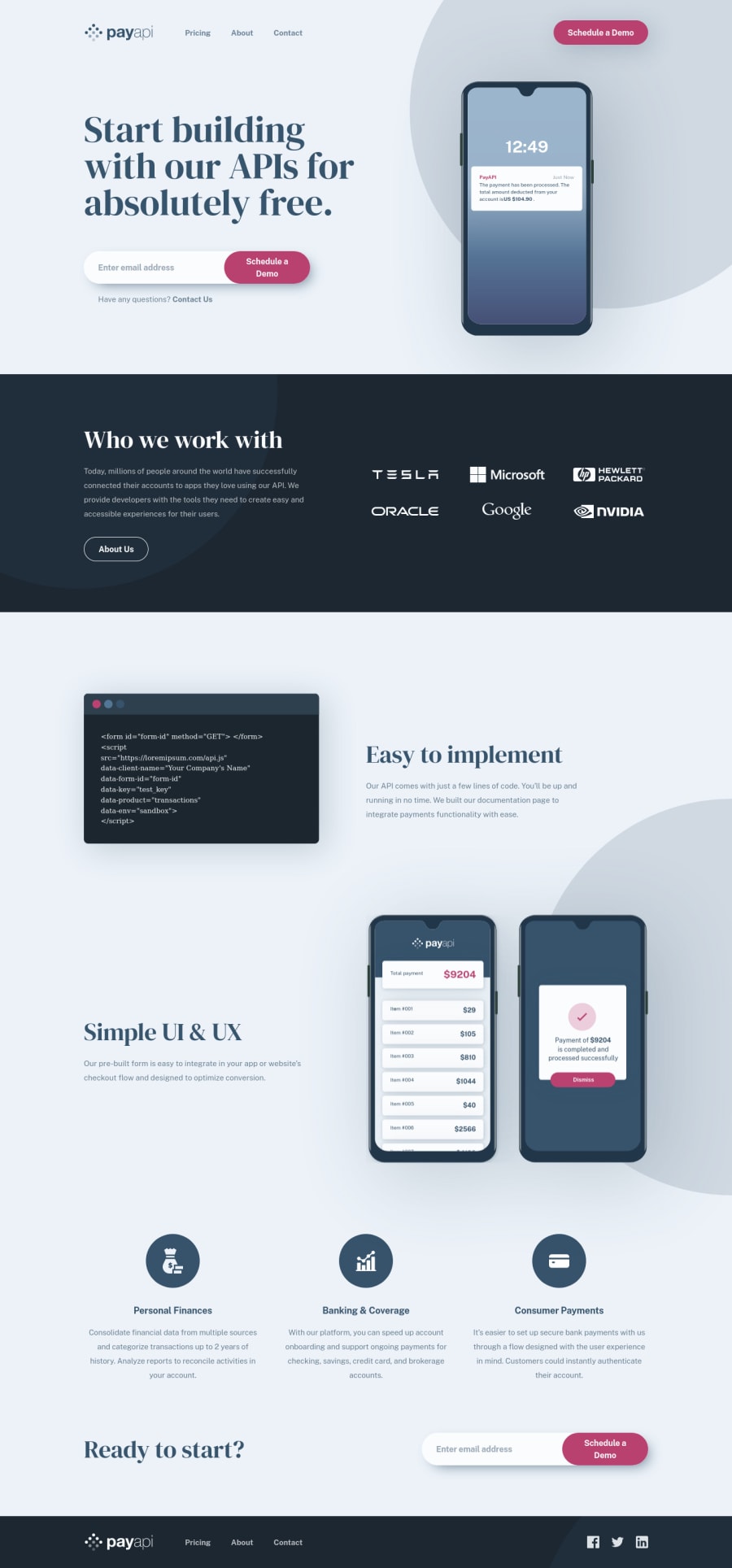
PayAPI static site with Astro, TailwindCSS
Design comparison
Solution retrospective
I didn’t go into this project expecting to have much trouble, and I was mostly right. At least, I never ran into any of the unrelenting existential crises posed by some of the previous challenges I’ve worked on, which made for a nice change of pace. What the project did have was a relatively wide scope of page contexts, each with its own set of edge cases to consider. Rather than posing one or two major roadblocks, this was more a test of endurance in solving a longer string of minor challenges.
I’ve spent my last few FEM projects working toward a final “go-to” stack of technologies to use (including Vite, TailwindCSS, and Svelte), and I continued that here by adding in Cypress for E2E testing. Since this project was going to be light on Javascript, I decided to use Astro instead of plain Vite.
Unfortunately, my environment-configuration skills weren’t quite up to the task of configuring five different tools at once (Astro, Vite, Svelte, Storybook, Tailwind), most of which have “convenient” one-command setups and which expect to be the center of your universe once installed. I ultimately dropped Storybook and Svelte in favor of a (somewhat ad-hoc) component testing strategy using Cypress.
As mentioned above, the site itself came together fairly easily once I managed to stop fighting with my toolchain. The hardest component to implement was probably the mobile navigation with its werid, four-dimensional background circle. I look forward to submitting this project and taking a look at some other solutions, since I’m not at all happy with the concessions I made in order to make mine work.
One important lesson I learned had to do with the various SVG illustrations on the index page: if you’re going to inline SVGs, particularly those using the <defs> element, make sure all of its ids are globally unique, since the SVGs can see each other once you’ve stuck them into the same markup. Equivalently, if some part of some SVG is inexplicably blurry, cropped, or otherwise mangled, there’s a good chance it’s borrowing an effect or path element from a neighboring graphic. It’s a good idea to check for this error first before spending two hours debugging a graphic by hand, which is a lesson I won’t be forgetting any time soon.
Community feedback
Please log in to post a comment
Log in with GitHubJoin our Discord community
Join thousands of Frontend Mentor community members taking the challenges, sharing resources, helping each other, and chatting about all things front-end!
Join our Discord
